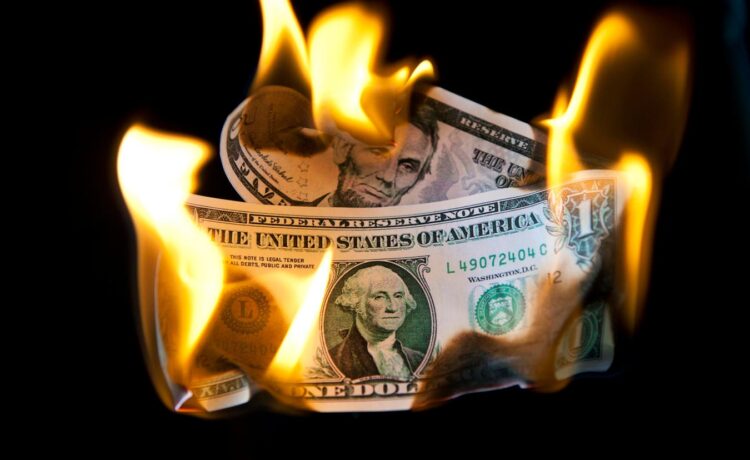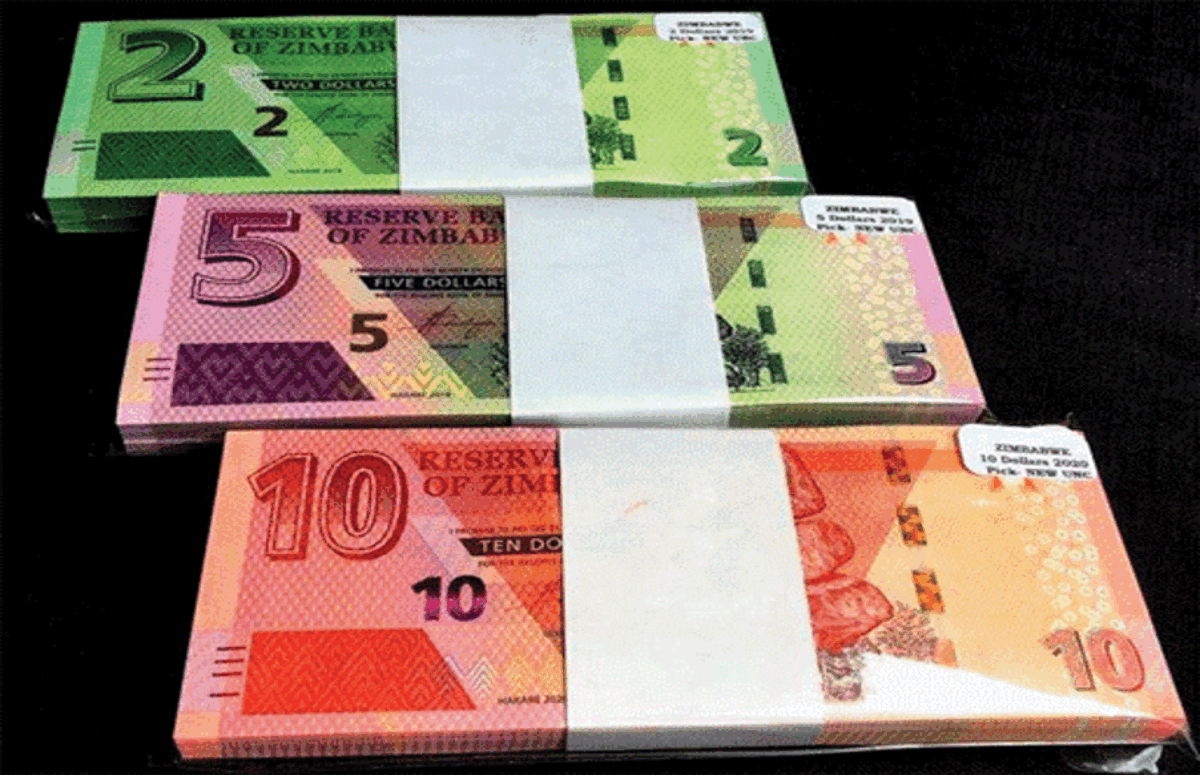Burning US five and one dollar bills, London, 8th August 2011. (Photo by Tom Stoddart/Getty Images)
On February 24, 2022, Russia’s invasion of Ukraine shocked the world, triggering one of the largest conflicts in Europe since World War II. The swift response from the United States and its allies, including freezing Russian assets, highlighted the immense power the U.S. wields through the U.S. dollar’s status as the world’s reserve currency. For nearly eight decades, this status has provided the U.S. with significant economic advantages, including lower borrowing costs and substantial influence over global trade.
However, the Ukraine conflict has led many countries, both allies and adversaries, to reconsider their reliance on the dollar. Nations like China and Russia among other BRICS+ countries are now more determined to challenge the dollar’s dominance and reduce their exposure to American financial influence. The U.S.’s ability to use the dollar as a tool of economic warfare, combined with its internal fiscal challenges, poses significant risks to the dollar’s future as the world’s reserve currency.
1. The U.S. Budget Deficit: A Growing Concern
The U.S. has been running substantial budget deficits for years, with no clear plan to reverse this trend. In fiscal year 2023 alone, the federal budget deficit soared by nearly $1.7 trillion, driven by rising interest costs on the national debt and increased government spending on healthcare, Social Security, and defense. With the national debt now exceeding $35 trillion, interest payments alone could erode global confidence in the dollar. Despite this alarming trend, fiscal conservatism is notably absent from the current presidential election discourse, making it unlikely that the situation will improve soon.
US Budget Deficit as a % of Nominal GDP
2. The U.S. Trade Deficit: Eroding Confidence
In addition to its budget deficit, the U.S. runs a substantial trade deficit, consistently importing more than it exports—a trend that has persisted for nearly five decades. In 2022, the trade deficit hit a record $948 billion, and in 2023 it was $773 billion, highlighting the country’s dependence on foreign goods and services. This persistent imbalance forces the U.S. to borrow from foreign creditors, further increasing the national debt. While this trade deficit has been sustainable due to global confidence in the dollar, a continued deficit could gradually erode this confidence.
US Trade Balance of Goods and Services in Billions
3. Geopolitical Shifts: The BRICS+ Challenge
The U.S. response to Russia’s invasion of Ukraine, particularly the freezing of Russian assets, has amplified global concerns about the risks of over-reliance on the U.S. dollar. For many nations, this action underscored the immense power the U.S. holds over the international financial system. In response, the BRICS+ group—comprising Brazil, Russia, India, China, South Africa, Iran, and others—has become a formidable force, rapidly accelerating efforts to reduce their dependency on the dollar. Together, BRICS+ represents a combined population of 3.64 billion and approximately $30 trillion, or 30% of global GDP, making it a significant and influential coalition in the global economy.
China, as a key player within BRICS+, has been leading the charge by promoting the use of its currency, the yuan, in international trade and actively forging currency swap agreements with other nations. Additionally, Russia, China, and several other BRICS+ members have been rapidly increasing their central bank gold reserves, a clear signal of their growing discomfort with holding a substantial portion of their reserves in U.S. dollars.
In the past two years, foreign central banks have significantly ramped up their gold purchases, with 2022 alone witnessing over 1,136 metric tons acquired—the highest level since 1967. Simultaneously, the U.S. dollar’s share of global foreign exchange reserves has declined from around 71% in the early 2000s to about 58.4% by the end of 2022, reflecting a decisive trend towards reserve diversification driven by the BRICS+ bloc’s rising influence.
“The issue of abandoning the dollar is not a question of whether we want it or not. It’s a matter of whether we need it or not. And we don’t need it.”
— Vladimir Putin, June 2022
“The international community needs to establish a fairer and more balanced global financial system, and the diversification of reserve currencies is a critical step in this direction.”
— Xi Jinping at the BRICS Summit, September 2023
Central Bank Gold Buying
Implications: A Bullish Outlook for Gold
Should the dollar lose its status as the world’s reserve currency, it is likely to decline in value, with significant implications for global markets. Gold remains the best option for investors looking to protect against this risk, and the global demand for it has been evident as opposed to dollars.
While the U.S. dollar has long enjoyed its status as the world’s reserve currency, significant challenges lie ahead. The dollar’s dominance is heavily reliant on global confidence, and if this confidence were to erode, it would be difficult to restore. The U.S. budget and trade deficits, combined with geopolitical shifts—particularly the growing influence of BRICS+ countries—suggest that the dollar’s dominance may be at risk. Investors should prepare for the potential implications of a weaker dollar, with opportunities especially in gold.

















